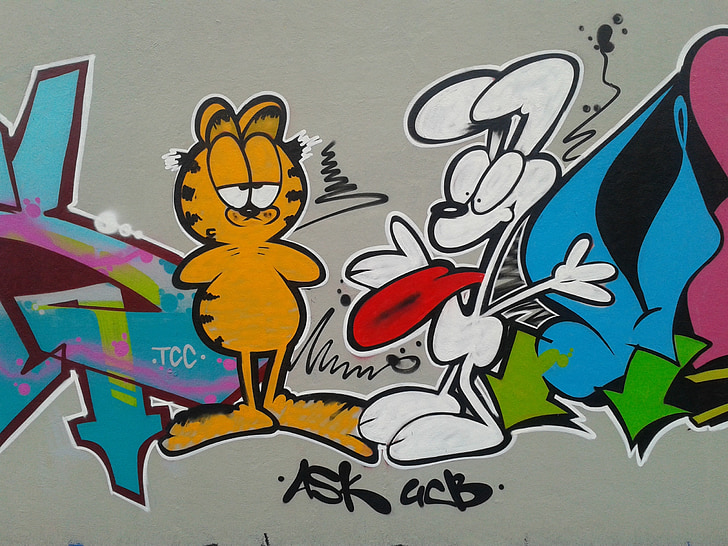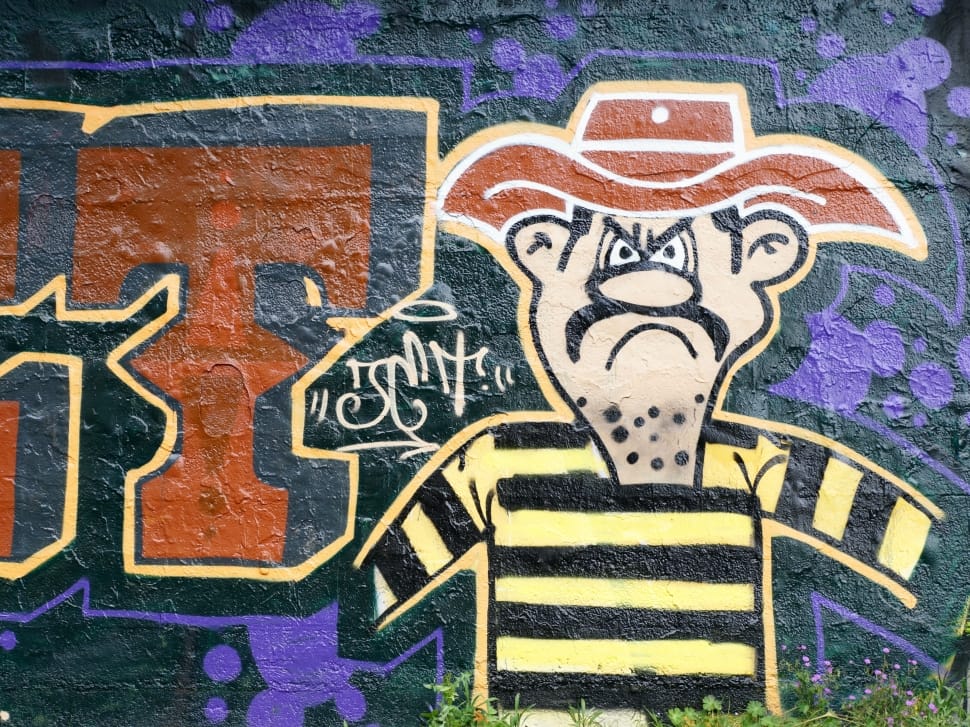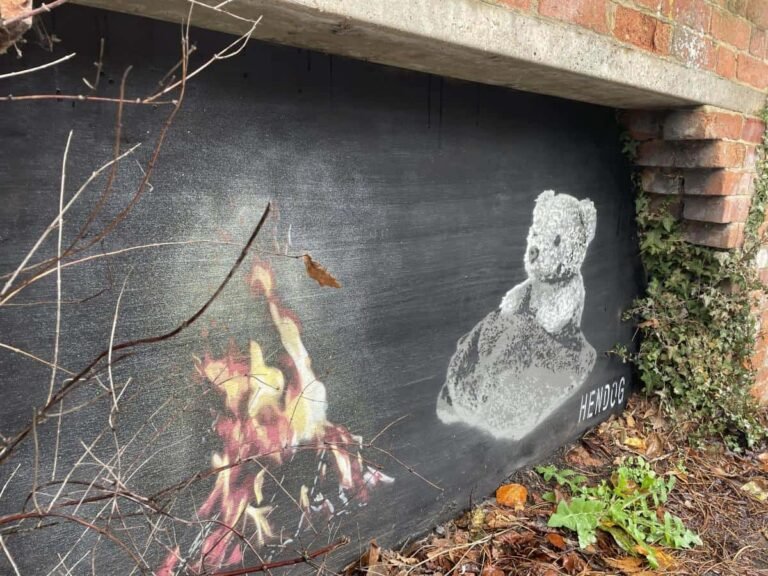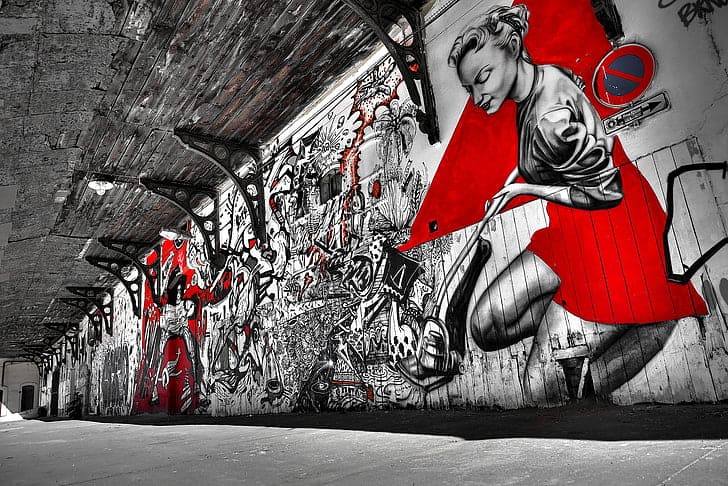Unveiling The Controversy: Is There A Fine Line Between Street Art And Vandalism?
In the bustling urban landscapes of today, one question continues to spark heated debates and passionate discussions: can we truly distinguish between street art and vandalism? This intriguing inquiry delves deep into the heart of creative expression and societal norms, stirring the curiosity of both art aficionados and skeptics alike.
In the following exploration, we embark on a journey to unravel the blurred lines between these two seemingly contrasting worlds, seeking to uncover the essence of artistic innovation and the boundaries that define acts of defacement. Join us as we navigate through the complex tapestry of street art and vandalism, illuminating the captivating stories etched onto the walls of our cities.
As a spray paint artist, Is it possible to draw a line between street art and vandalism, although the distinction is often subjective?
Street art is usually a deliberate and authorized form of artistic expression that is meant to beautify and engage the community.
On the other hand, vandalism is illegal and involves the unauthorized defacement of public or private property.
Ultimately, the difference between the two comes down to the intent behind the act and the context in which it takes place.
Know 10 Places Where Graffiti Art Is Legal
street art vs vandalism
Street art and vandalism are often used interchangeably, but they are actually two distinct forms of public expression with different characteristics and purposes.
Street art refers to a form of public art that is displayed on buildings, streets, or other public spaces. It is created with the intention of beautifying the area and engaging the community. Street art can take many forms, including murals, graffiti, stickers, and installations.
Many street artists work with the building owner or obtain permission through an official process such as a mural program, although some choose to work illegally. Street art is often seen as a positive addition to the urban landscape and can enhance the visual appeal of a community, bring people together through shared experiences, and raise awareness of social and political issues.
Vandalism, on the other hand, is the unauthorized and illegal defacement of public or private property, often with the intent to damage or destroy. Vandalism can include acts such as graffiti, breaking windows, or destroying public property.
Unlike street art, vandalism is not created with the intention of beautifying the area or engaging the community, but instead is meant to cause harm, damage, or destruction. Vandalism can have a negative impact on the community, both aesthetically and financially, as it can result in the need for costly repairs.
It’s important to note that the distinction between street art and vandalism can be subjective and varies from community to community.
Learn More About The Law About Vandalism
What is considered street art in one area may be viewed as vandalism in another, and the same piece of art may be considered street art in one location and vandalism in another depending on the context.
The key factor in determining whether something is street art or vandalism is the intention behind the act and the way it is received by the community.
How can we distinguish street art from vandalism?
Street art and vandalism are often distinguished by their intent, impact, and location. Street art is typically created with the intention of adding to the aesthetic of a public space, while vandalism is done to damage or deface property.
Street art is usually created with the permission of property owners or the community, while vandalism is illegal. Additionally, street art is often located in designated areas, while vandalism can occur anywhere.
Where is the line between art and vandalism?
The line between art and vandalism is subjective and can vary depending on individual perspectives and cultural norms.
However, some common criteria used to distinguish between the two include the intention of the creator, the impact on the community and the physical environment, and the legality of the act.
Graffiti Art Comes From The Origin As An Act Of Vandalism
Art is often created with the purpose of expressing a message or promoting creativity, and its impact on the surrounding area is usually seen as positive. Vandalism, on the other hand, is typically done to damage or deface property, and its impact is seen as negative.
The legality of the act also distinguishes between the two, with vandalism being illegal and art often being protected by freedom of expression laws.
However, these criteria are not set in stone and there are many cases where the distinction between art and vandalism can be blurred.
What are the boundaries between street art and vandalism?
The Characteristics of Street Art
Street art is characterized by its creative expression and use of public space as a canvas. It is often created with permission or commissioned, and its aesthetic value is often seen as a way of beautifying urban landscapes. Street artists use a variety of techniques such as spray painting, stenciling, and paste-ups to create works that are eye-catching and thought-provoking.
The Characteristics of Vandalism
In contrast, vandalism is characterized by the destruction of property and the lack of permission from the owner. Vandalism is often seen as having no aesthetic or creative value, and its negative impact on the community is well documented. Vandals often use graffiti and spray paint to deface buildings, monuments, and other public spaces, causing damage that can be costly to repair.
The Grey Area
The line between street art and vandalism is not always clear-cut, and some street art may be considered vandalism by some. Street art that becomes vandalized, for example, may no longer be seen as an art but instead as a destructive act. The role of context and cultural attitudes can also play a part in determining whether a particular piece of street art is seen as vandalism or as a form of creative expression.
Legal Implications
Laws on vandalism and graffiti vary from country to country, and punishments for vandalism can range from fines to imprisonment. In some cases, street art may be protected by law, but the legality of street art can also be influenced by cultural attitudes and the context in which it is created.
What is the difference between street art and graffiti?
Street art and graffiti are both forms of visual expression found in public spaces, but they have some key differences. Graffiti is often seen as vandalism and is illegal in many places.
It is often done quickly and without permission, using spray paint or markers to make messages or images on walls, buildings, or other structures.
Street art, on the other hand, is often done with the permission of the property owner and can take many forms, including murals, installations, and sculptures. Street art is often seen as a legitimate form of art and is celebrated for its ability to beautify and enliven public spaces.
Street art vs. vandalism and how to tell the difference
Street art and vandalism are not the same things, although the line between them can be blurry in some cases. The main difference between the two is the legality and the intention behind the act.
To tell the difference between street art and vandalism, one can look at factors such as the location, the size and scale of the piece, the materials used, and the overall impact it has on the community.
If the art is done in a designated area and is approved by the local authorities, it is more likely to be considered street art. If it is done illegally and causes harm or damage to property, it is likely to be considered vandalism.

Where is the line between vandalism, street art, and graffiti?
The line between vandalism, street art, and graffiti can be a matter of perception and interpretation, and it can vary depending on the context and cultural attitudes toward these forms of expression. However, some general guidelines can help distinguish between the three.
- Vandalism is the intentional damage or defacement of property without the owner’s permission. It is illegal and can be seen as a criminal act.
- Graffiti is a form of vandalism that involves writing or drawing on a surface, usually in public spaces, without permission. Graffiti can take many forms, including tags (signatures), throw-ups (quick, simple graffiti), and pieces (larger, more elaborate drawings).
- Street art is a more expansive term that encompasses a variety of artistic expressions in public spaces. Street art can include murals, installations, sculptures, and other forms of creative expression. Unlike graffiti, street art is usually done with the permission of the property owner or in designated areas where it is allowed. The intention behind street art is often to beautify or enliven public spaces and make a cultural or political statement.
In short, the line between vandalism, graffiti, and street art is often drawn based on legality, intent, and impact on the community and the environment. The distinction between the three can be a matter of personal interpretation, but it is important to consider these factors when evaluating the value and impact of these forms of expression.
Is it a crime to draw graffiti?
Whether drawing graffiti is a crime or not depends on the specific laws of the jurisdiction where the act is committed and the circumstances surrounding it.
In many cases, graffiti is illegal and considered vandalism because it involves writing or drawing on someone else’s property without their permission. The penalties for vandalism can range from fines to imprisonment, depending on the severity of the offense and the laws of the jurisdiction.
Has the Mona Lisa ever been vandalized?
Yes, the Mona Lisa, one of the most famous paintings in the world, has been the target of acts of vandalism several times.
The first recorded instance of vandalism on the Mona Lisa occurred in 1956, when a visitor threw acid at the painting. The painting was restored and has since been placed behind protective glass.
In 1974, a woman sprayed red paint on the painting. The painting was again restored, but the attack raised questions about the security of the painting and the museum where it is housed, the Louvre in Paris, France.
In 2009, a visitor to the Louvre wrote “BF” on the painting with a marker. The vandalism was quickly removed, and the visitor was arrested and later charged with criminal damage.
These incidents demonstrate the importance of protecting the Mona Lisa and other priceless works of art, and they highlight the challenges of preserving and displaying works of art in public museums.
Despite these challenges, the Mona Lisa remains one of the most popular and widely recognized works of art in the world and continues to be a source of fascination and inspiration for millions of people.
Conclusion
In conclusion, it is important to understand the boundaries between street art and vandalism in order to appreciate the value of street art and the impact of vandalism on communities.
While the distinction between the two can be blurred, it is important to recognize the key differences and consider the legal implications of each. We should strive to support street art and discourage vandalism, as it can have a lasting impact on our communities and our world.
References:
- StreetArtNews: A leading online platform for street art news and events, StreetArtNews provides in-depth coverage of the latest street art trends and works from around the world.
- Graffiti Research Lab: A collective of artists, engineers, and activists who use technology to explore the intersection of street art and activism.
- StreetArtGlobe: A comprehensive online resource for street art, StreetArtGlobe provides a wealth of information on street artists, exhibitions, and events.
- StreetArtToday: A blog dedicated to street art, StreetArtToday features news, interviews, and articles on the latest street art trends and works.
- Vandalog: A blog that covers street art and graffiti, Vandalog offers insights and analysis on the latest trends and controversies in the world of street art.
- The World Atlas of Street Art and Graffiti: A comprehensive guide to the world of street art and graffiti, this online resource features a wealth of information on street artists, techniques, and styles.
- Artsy: A leading online platform for art, Artsy features a curated selection of street art and graffiti, as well as articles and interviews on the latest street art trends and works.
Ruth Aquilani is a renowned graffiti artist known for her bold, colorful, and expressive style. She began her career as a street artist in the early 2000s, quickly making a name for herself in the graffiti community with her unique and striking works of art.








